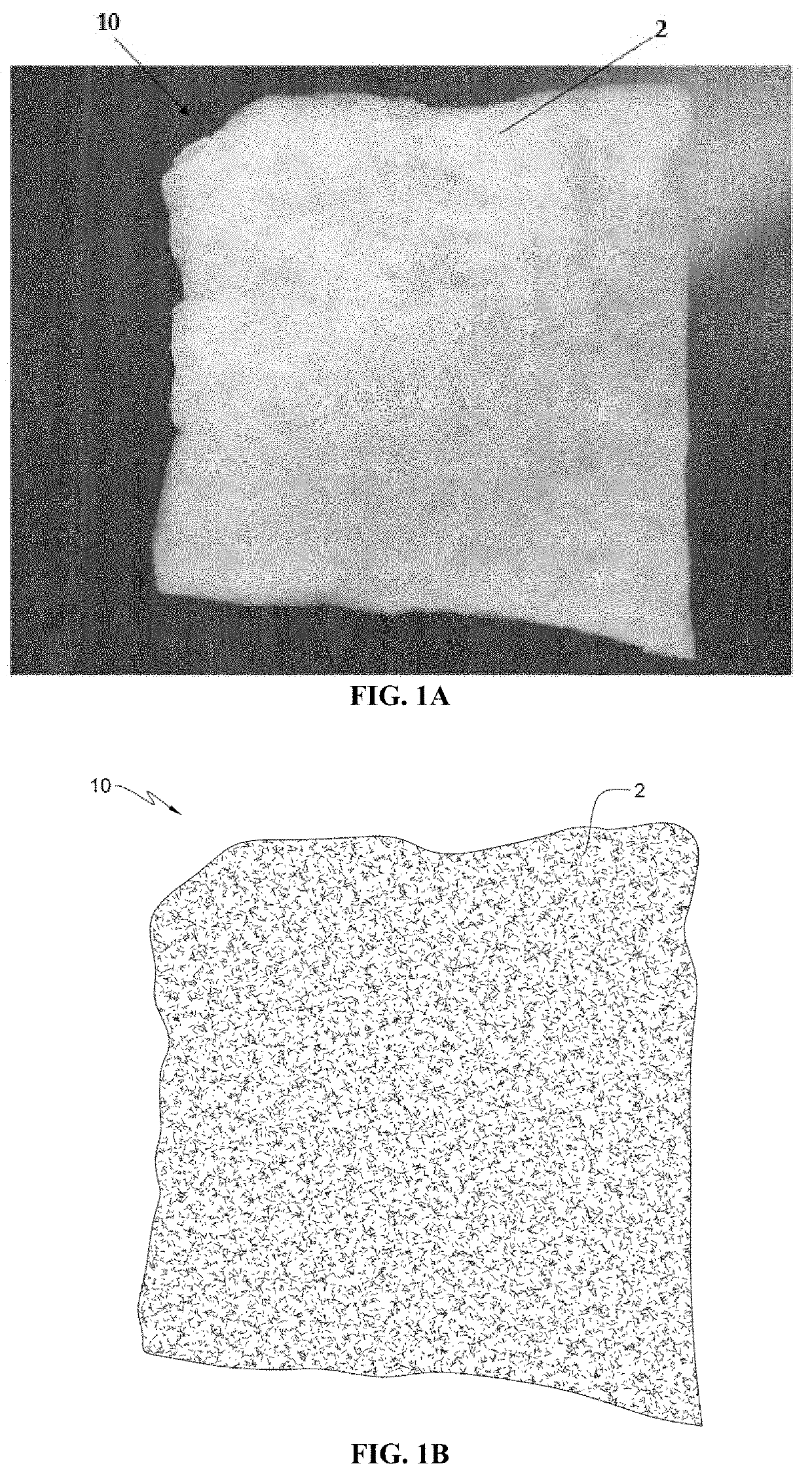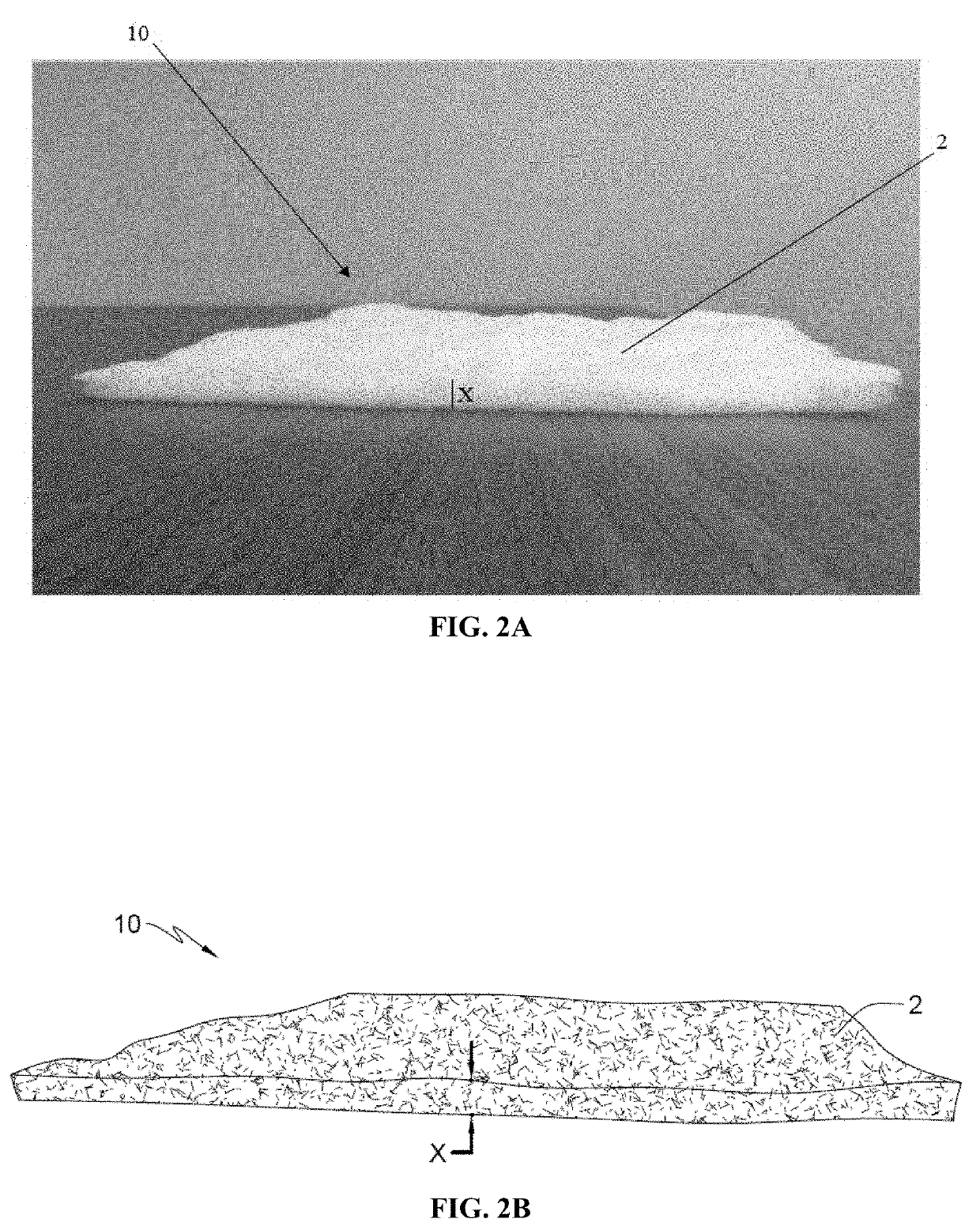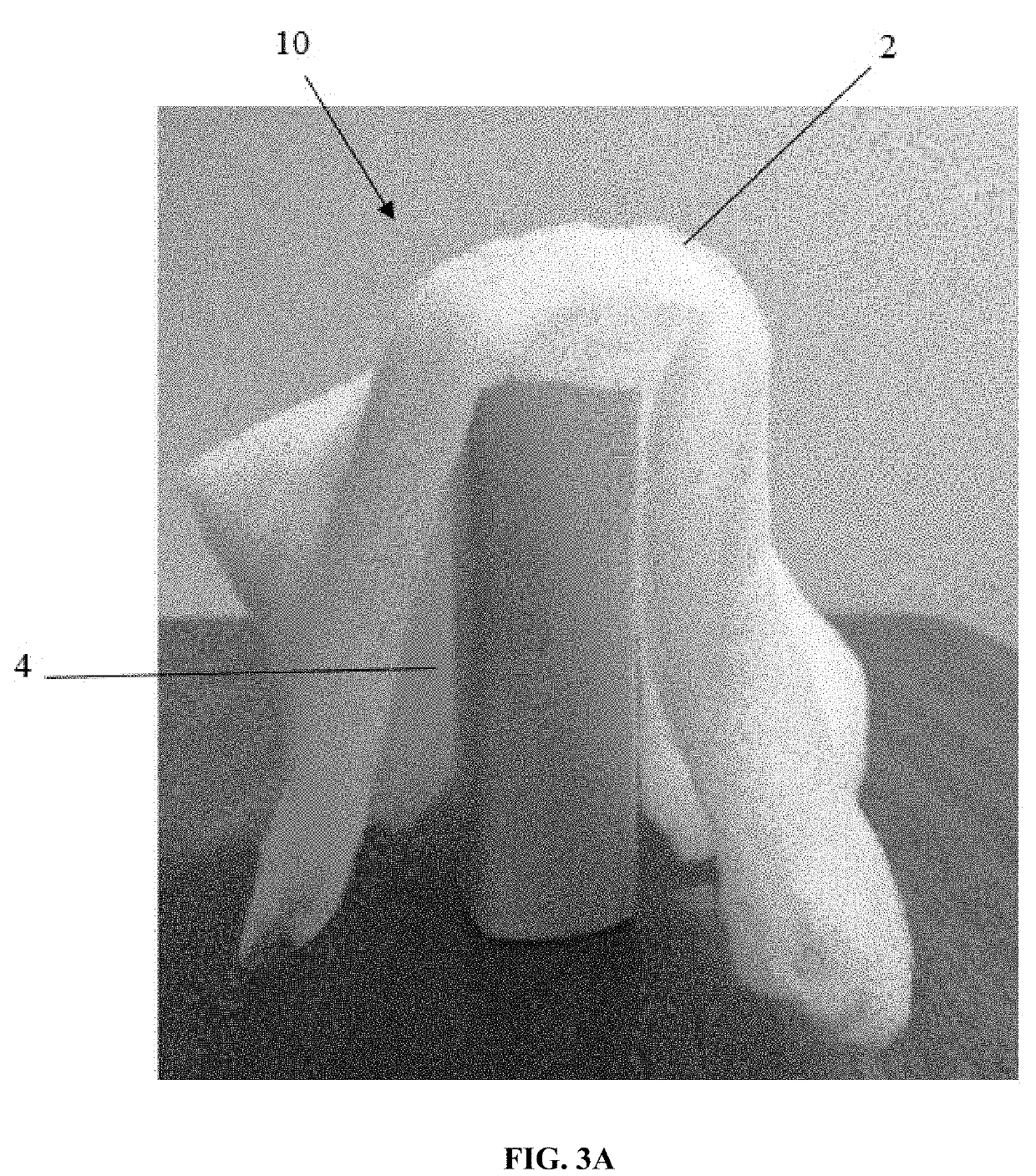Air-cured batting insulation
- Summary
- Abstract
- Description
- Claims
- Application Information
AI Technical Summary
Benefits of technology
Problems solved by technology
Method used
Image
Examples
example 1
[0172]A fiber mixture is prepared by mixing the following:[0173]50% 0.9 Denier, 51 mm siliconized PCR (post-consumer recycled) polyester staple fiber[0174]25% 3.0 Denier, 51 mm non-siliconized PCR polyester staple fiber[0175]25% 6.6 Denier, 64 mm siliconized PCR polyester staple fiber
After being mixed / blended, the fiber mixture is then processed into web form on a traditional carding machine to form a nonwoven web. The web is then sent through a cross-lapper in order to get the desired weight and thickness. The cross-lapped webbing is then sprayed with a resin solution (30 vol. % resin comprising a cross-linked copolymer of butyl acrylate and methyl methacrylate; 60 vol. % isopropyl alcohol; 10 vol. % water), and sent through a room temperature 3 pass oven with the convection fans running to help expedite the drying process. The resin in the resin solution is a milky white pourable liquid that comprises a self-crosslinking crosslinked copolymer of butyl acrylate and methyl methacryl...
PUM
| Property | Measurement | Unit |
|---|---|---|
| Length | aaaaa | aaaaa |
| Length | aaaaa | aaaaa |
| Fraction | aaaaa | aaaaa |
Abstract
Description
Claims
Application Information
 Login to View More
Login to View More - R&D
- Intellectual Property
- Life Sciences
- Materials
- Tech Scout
- Unparalleled Data Quality
- Higher Quality Content
- 60% Fewer Hallucinations
Browse by: Latest US Patents, China's latest patents, Technical Efficacy Thesaurus, Application Domain, Technology Topic, Popular Technical Reports.
© 2025 PatSnap. All rights reserved.Legal|Privacy policy|Modern Slavery Act Transparency Statement|Sitemap|About US| Contact US: help@patsnap.com



